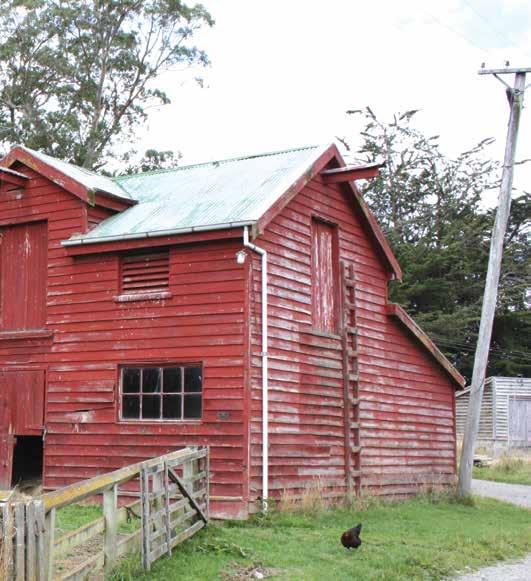
3 minute read
19 ARCHAEOLOGY
Arborists – don’t forget the archaeology
“Often historic trees are located on or close to archaeological sites – which is why arborists need to know about the archaeological provisions of the Heritage New Zealand Pouhere Taonga Act,” says Heritage New Zealand Archaeology Manager, Vanessa Tanner.
Arborists have to factor a lot of things into their work – from consents through to health and safety, and everything in between. It may feel that archaeology is just another thing to add to the list.
“The good news is that Heritage New Zealand Pouhere Taonga has offices around the country and a team of regional archaeologists and Māori Heritage Advisors who provide information and advice, and can guide people through the archaeological authority process,” says Vanessa.
The Heritage New Zealand Pouhere Taonga Act makes it illegal to modify or destroy the whole or part of an archaeological site without the prior authority of Heritage New Zealand Pouhere Taonga.
Archaeological sites are defined as places associated with pre-1900 human activity where there may be evidence relating to the history of New Zealand – and are an irreplaceable part of our heritage.
“It’s good for arborists to be ‘archaeologically aware’ when they’re thinking about work that they’re undertaking, as often it can impact areas below the ground. Because of the nature of archaeological sites, some of the work arborists undertake can potentially impact on sub-surface archaeological features,” she says.
When trees are in and around archaeological sites they can become physically connected to archaeological remains. Tree roots can disturb sub-surface remains and bring them to the surface or create in-ground disturbance resulting in artefact deposits being caught up in the root plate. Tree roots will grow along looser soils – these soils may be archaeological features such as postholes of buildings or drains cut into a harder subsoil.


1

For above-ground archaeological sites, trees can be both a hazard to the survival but also in some cases intrinsic to the structural integrity of the structure.
There is often a close correlation between protection of archaeological sites and management of trees on sites, and arborists have played an important role in ensuring the long-term preservation of archaeological sites.
One example of this is work completed at the Ringway Ridges Homestead Stable, a Category 1 listed building in Otautau, Southland, which dates to the 1890s. The site was overgrown by a macrocarpa that was heavily pruned and managed by an arborist to ensure the long-term protection of both the archaeological site and the tree.
Any works that may disturb the ground, including tree removals, land clearance and stump grinding, can potentially impact archaeological sites, and it is important to manage risk. The risk involved is the loss of information and destruction or modification of a site, but also the personal and reputational risk of damaging an archaeological site, including prosecution and substantial penalties.
“That’s why – depending on the trees that are being worked on and the broader cultural values of the landscape in which they sit – the archaeological authority process needs to be factored into arborists’ planning,” says Vanessa.
“If arborists suspect their work may impact archaeological features, contact Heritage New Zealand Pouhere Taonga as early as possible. That way we can ensure people have good information about our processes, and we can help progress authority applications in a timely way if they are needed.” For more information please visit: heritage.org.nz
Writer: John O’Hare
1. The Ringway Ridges Stable after careful arboring, which saw the macrocarpa tree (that was infringing on the archaeological site) reduced in size.
2. A piece of ceramic embedded into the tree root of a macrocarpa.
3. The Ringway Ridges Stable before arboring work.
(CREDIT: HERITAGE NEW ZEALAND POUHERE TAONGA – ALL PHOTOS)







